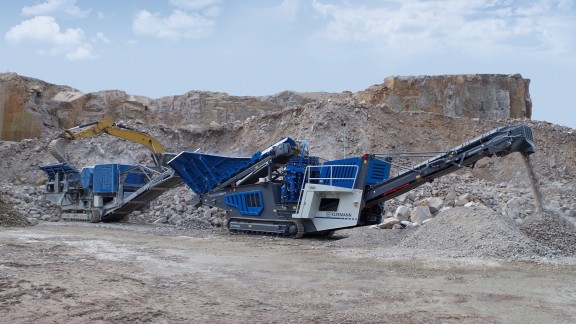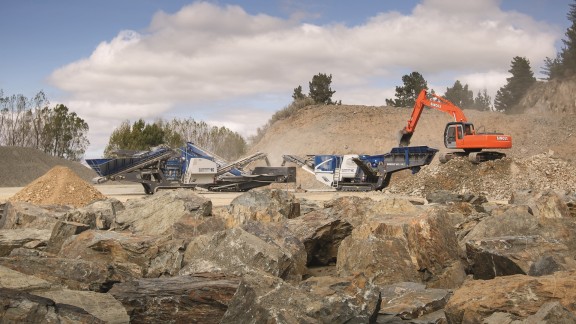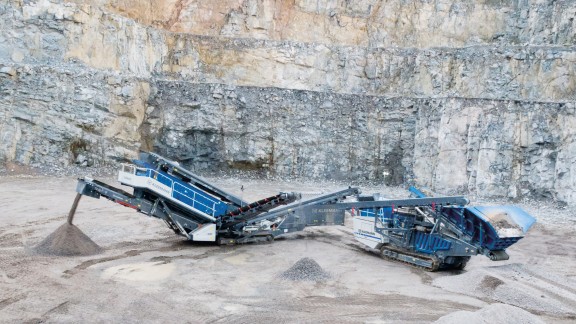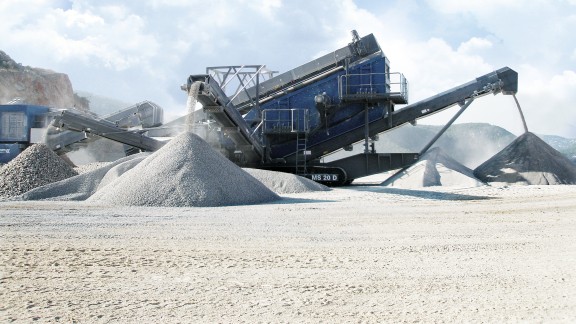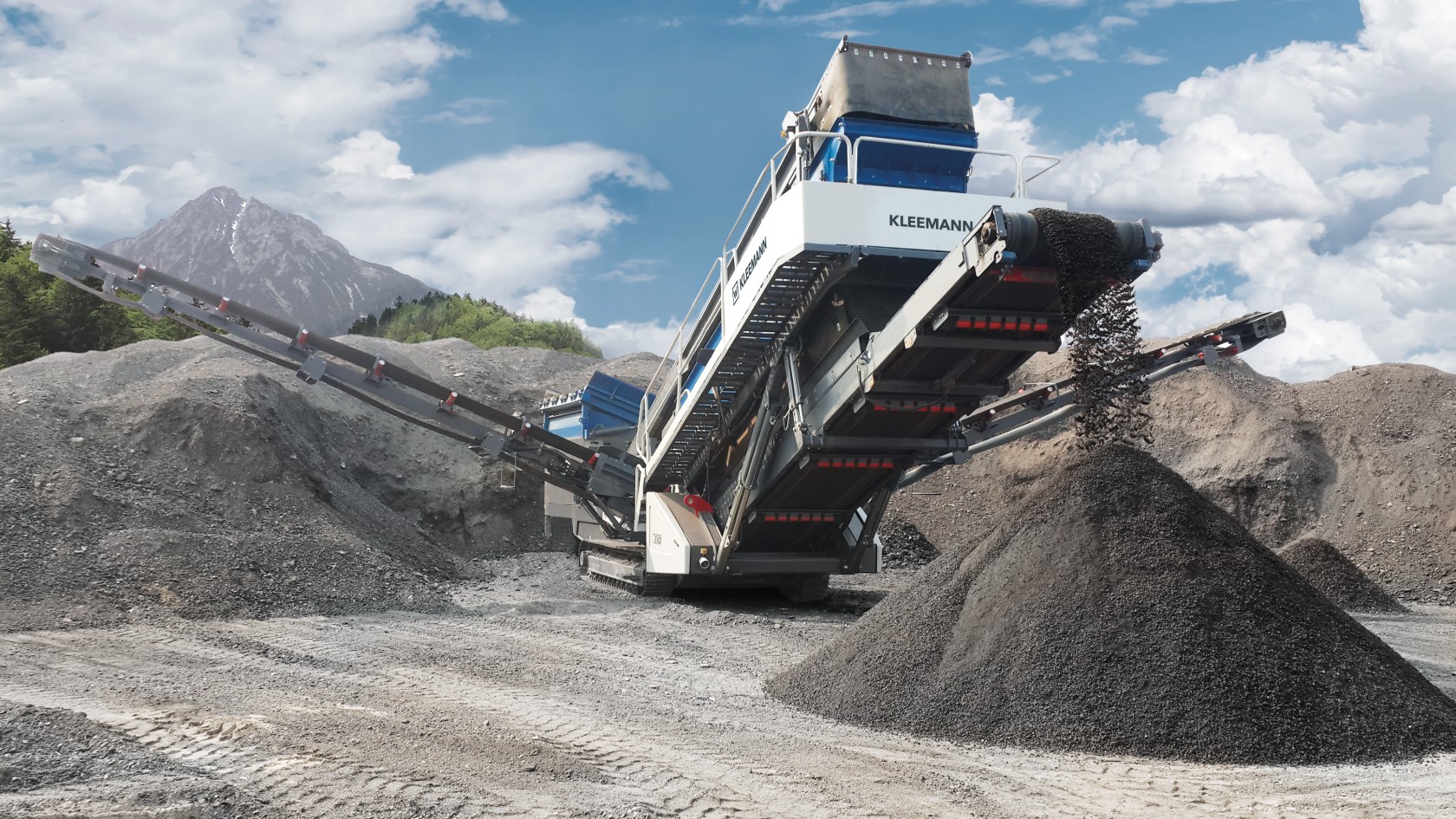

Superior Material Processing
When processing natural rock, larger rocks are broken up into defined grain sizes in a multi-stage crushing and screening process.
If the rock is processed in mobile plants, excavators transfer the blasted rock to crushers which are usually located directly alongside the quarry wall.The crushed stone is then either transferred directly to the next processing stage on conveyor belts or removed by trucks. Alternatively, the broken material can also be removed by heavy-duty trucks. Excavators or wheeled loaders load the rock onto trucks at the quarry wall for transport to the stationary processing plant.
When it comes to crushing methods, a distinction is made between pressure crushing and impact crushing. Jaw and cone crushers are crushing machines that operate using the principle of pressure crushing. In this process, the material is crushed between the crushing tools under extreme pressure. In an impact crusher, on the other hand, impact crushing is used. Here the material is accelerated by a fast-running rotor and crushed upon impact with a stationary impact mechanism. Jaw crushers are ideally suited for processing medium-hard to hard rock and are used as primary crushers. Impact crushers are used as primary and secondary crushers to process soft to medium-hard rock and produce larger quantities of fines. Cone crushers are used exclusively as secondary crushers for hard rock.
